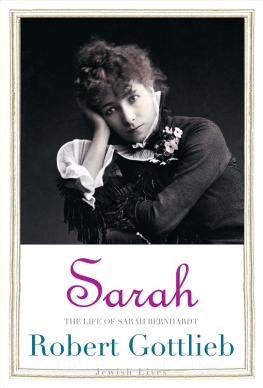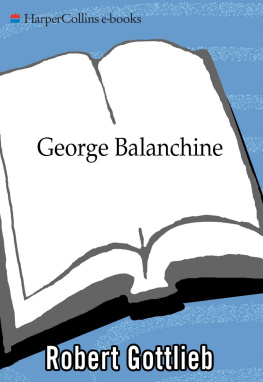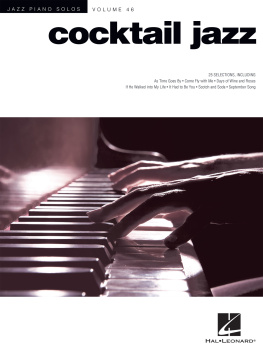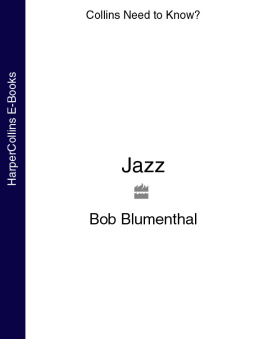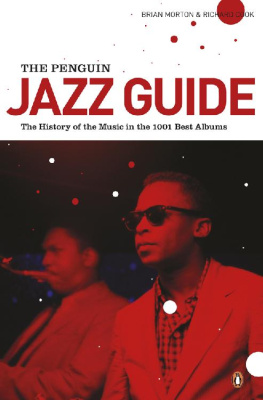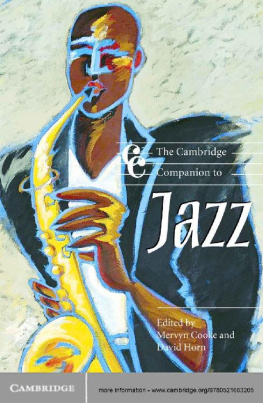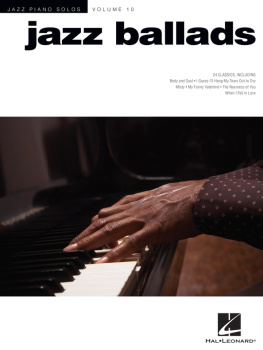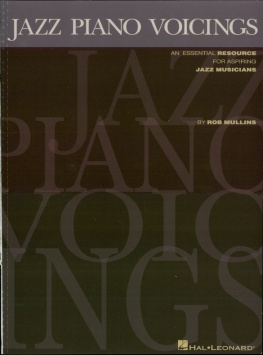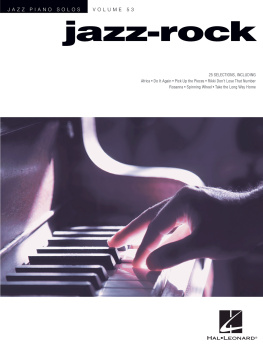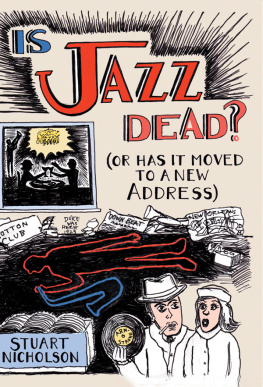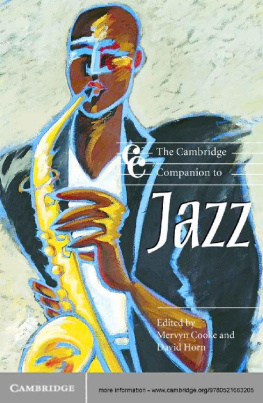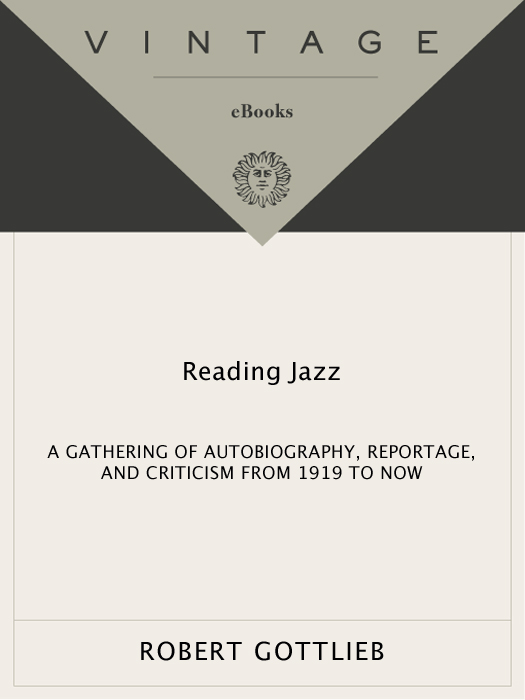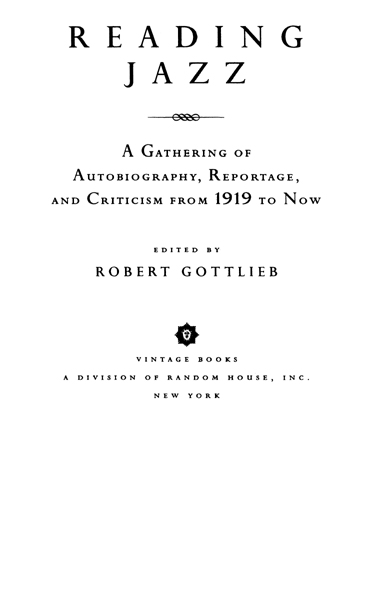Acclaim forROBERT GOTTLIEBs
READING JAZZ
Fascinating, heroic. [Reading Jazz is] a valuable introduction to the practice and history of jazz.
The Atlanta Journal-Constitution
Its the passionthe passion of and for the musicthat matters. No other book on jazz catches that magnificent obsession the way Reading Jazz does. [It is] simply a delight.
Commonweal
An instant classic. If an anthology can be a work of art, Reading Jazz is a masterpiece. This terrific book is as vital, surprising, raunchy, beautiful and transcendent as the music it celebrates.
Daily News
By far the best thing of its kind ever published. If the reportage included in Reading Jazz is uniformly excellent, the autobiography is arguably even better.
The Wall Street Journal
The finest, most informative and colorful writing about jazz probably the most comprehensive one-volume chronicle of jazz ever assembled. Poring through the book, one is struck both by the warmth and depth of the musicians who pioneered the art form and by the caliber of those who chose to write about it.
The Denver Post
Impressive. [Reading Jazz] will provide the jazz-lover not only hours of reading enjoyment but a lasting reference book as well.
Richmond Times-Dispatch
A feast.
The Times-Picayune
The last word on jazz as well as jazz writing.
Interview
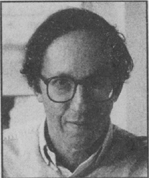
ROBERT GOTTLIEB
READING JAZZ
Robert Gottlieb has been editor-in-chief of Simon & Schuster, Alfred A. Knopf, and The New Yorker. He has previously edited the Everymans edition of The Collected Stories of Rudyard Kipling and The Journals of John Cheever.
ALSO BY ROBERT GOTTLIEB
A Certain Style: The Art of the Plastic Handbag 19491959
The Journals of John Cheever (Editor)
The Collected Stories of Rudyard Kipling (Everymans Library, Editor)
FIRST VINTAGE BOOKS EDITION, NOVEMBER 1999
Compilation copyright 1996 by Robert Gottlieb
All rights reserved under International and Pan-American Copyright Conventions. Published in the United States of America by Vintage Books, a division of Random House, Inc., New York, and simultaneously in Canada by Random House of Canada Limited, Toronto. Originally published in hardcover in the United States by Pantheon Books, a division of Random House, Inc., New York, in 1996.
Permissions Acknowledgments appear on .
Vintage and colophon are registered trademarks of Random House, Inc.
The Library of Congress has cataloged the Pantheon edition as follows: Reading jazz : a gathering of autobiography, reportage, and criticism from 1919 to now / edited by Robert Gottlieb.
p. cm.
eISBN: 978-0-307-79727-8
1. JazzHistory and criticism. 2. Jazz musiciansBiography.
1. Gottlieb, Robert, 1931.
ML3507.R44 1996
781.6509dc 206914219
Author photograph Anne Hall
www.vintagebooks.com
v3.1
CONTENTS
INTRODUCTION
Like all anthologies, this one is a compromise. My original idea was to limit it to the very best writing on jazz from whatever source and on whatever subject, from 1919 into the 1990s. But as I read more and more, I kept coming on pieces whose extraordinary interest or historical importance demanded that they be exhumed, even if their actual prose was less than brilliant. Nor did it seem sensible to include half a dozen pieces on one major artist and none on another, simply because the first attracted better writing; a principle of inclusivity began to take over. The same thing happened in regard to writers. As in any field, there are a few masters, and this entire volume could easily have been filled with their work. But I came to feel that in some informal way the book should reflect the history of jazz writing as well as the history of jazz.
Reading Jazz is divided into three parts. The first is autobiographical, and Ive been surprised and delighted by the quality of expressiveness to be found in so many first-person narratives and interviewsprobably a higher level of vitality than could be found, for instance, in a comparable selection of writing from the ballet or opera worlds. The reportage section reflects a broad diversity of attitudes and styles but tries always to provide third-person witness to a subject of real interest. And the criticism has been deliberately chosen to reflect the widest possible spectrum of thinking about jazz itself and its major figures.
I came to jazz late in my life, a disadvantage in some ways, since I had to start from scratch in my reading. On the other hand, I started with no preconceptions about writers orperhaps more importantabout the issues that have torn the jazz world apart for the last half-century or more and have left their mark on much of the writing to be found in this book. These include both the stylistic wars, beginning with the struggle between the moldy figs and the boppers, and the far more unyielding war over racea war that seems always to be with us, though there has been a radical shift in tone from the relatively sunny narratives of early jazz to the polemical attitudes of so many of the later musicians and commentators. Equally noticeable is a change in the first-person narratives as they progress from the pre-war world of boozing and reefers to the post-war world of hard drugs which devastated the lives and careers of such artists as Charlie Parker, Billie Holiday, Art Pepper, Anita ODay, and Hampton Hawes.
Another change that this book tries to reflect is that between the earlier criticism, which focuses on trying to place jazz as an artwhat is jazz, what claims can be made for it as being serious, what is its relationship to classical music (not unlike the old photography vs. painting comparisons)and a later criticism that is more centered on specific performers and gradually grows more historical and academic.
T HE CONTENTS OF Reading Jazz come from many sourcesautobiographies, essay collections, old issues of magazines, and previous anthologies, of which many valuable examples have been published, though none on this scale. The literature is enormous, and no one volume, even of these monstrous proportions, can do justice to it. My hope is that readers will be drawn to certain complete texts that could only be excerpted here, and will discover writers whom they can pursue in bookstores and librariesthat this book will serve, in fact, as an advertisement for an entire literature. Some of the material here is, of course, taken from books that remain in print. Other selectionslike the extended narrative by Mary Lou Williams, Billie Holidays blindfold reactions to a bunch of current records, and the long interview with Milt Gabler about Commodore Recordsare more or less unavailable elsewhere. And whereas some of our finest criticsmen like Whitney Balliett, Gene Lees, and Gary Giddinshave published numerous collections of their work, the work of others, like Dan Morgenstern, is uncollected and unavailable unless one has old copies of the journals they wrote for or the albums for which they provided the liner notes.


